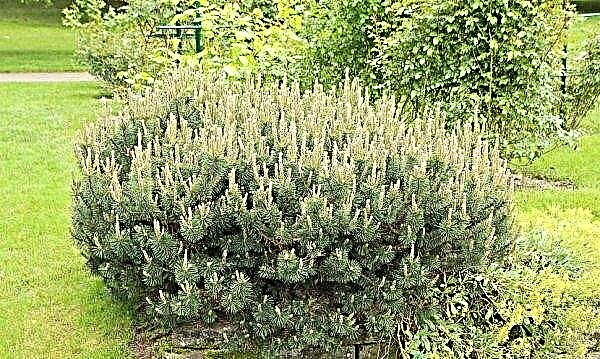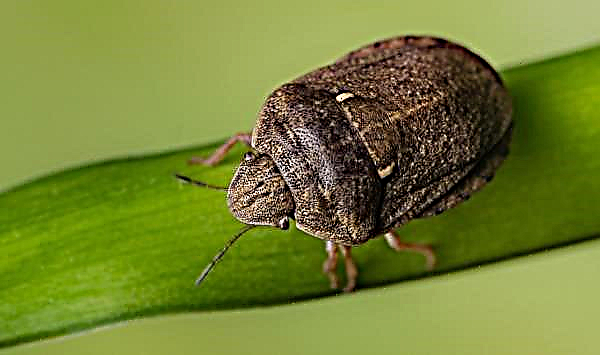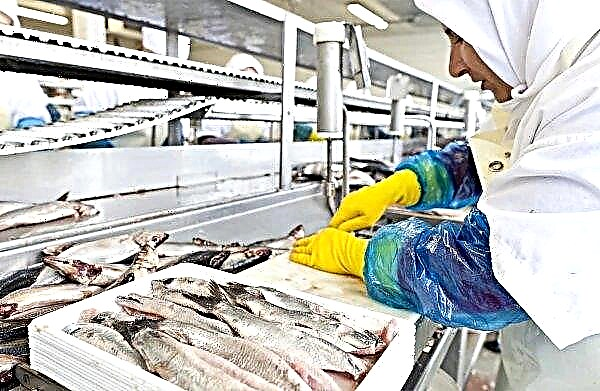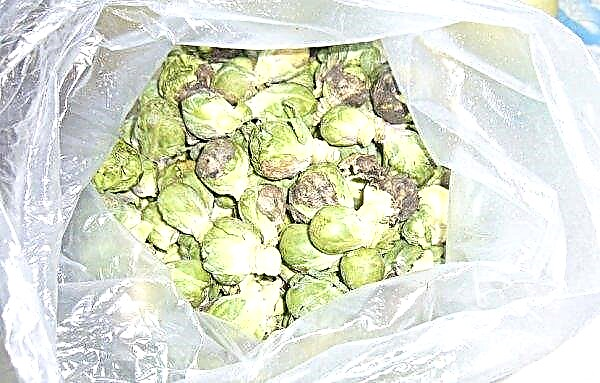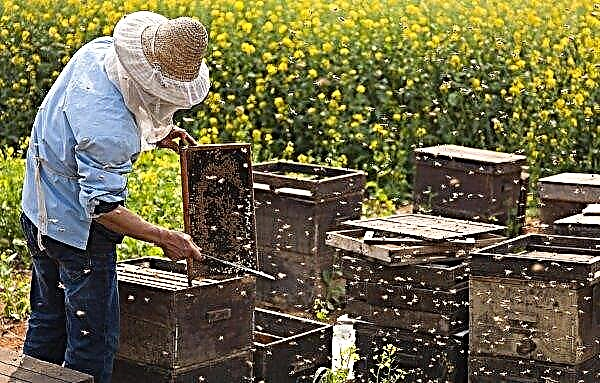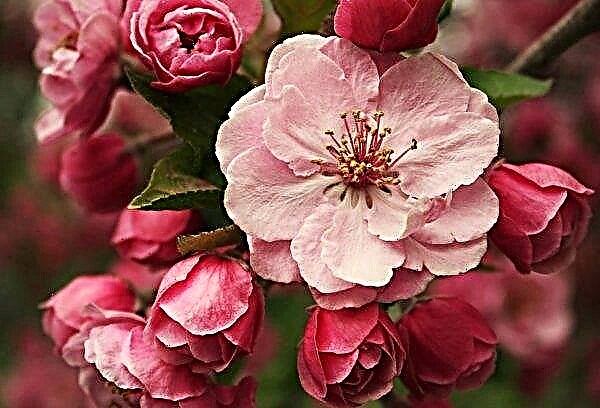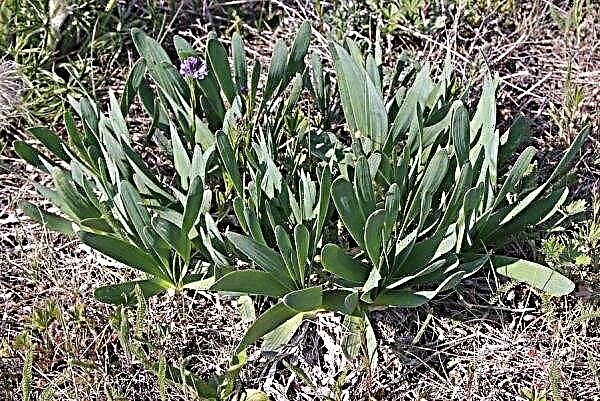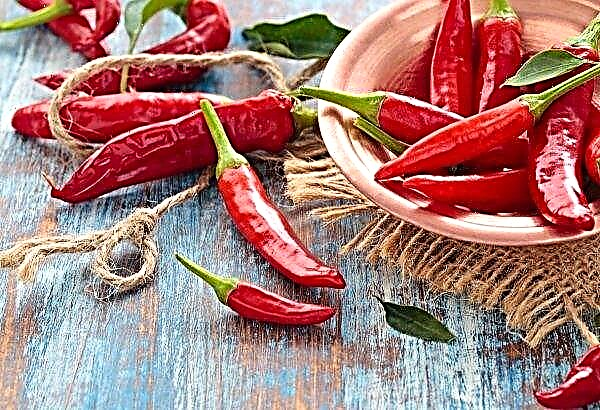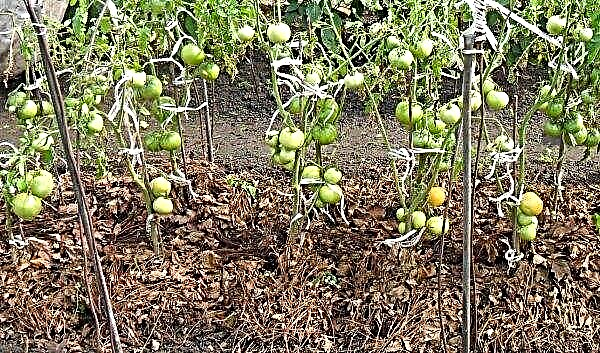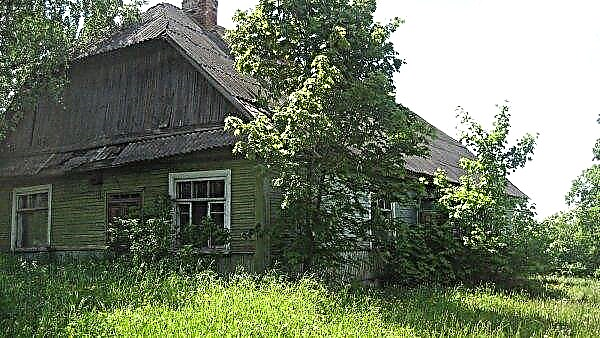Many designers and gardeners claim that it is the thuja that is considered the queen of the summer cottage. The tree grows beautifully, able to give planting luxury and delights daily with a beautiful coniferous aroma, saturating the air with volatile phytoncides. In landscape design, it is often used to create hedges capable of revitalizing any site. The most popular among domestic gardeners are two varieties - Smaragd and Brabant. It is about them that will be discussed in today's review.
Thuja general description
Thuja is a variety of evergreen trees, characterized by resistance to frost and unpretentiousness to the composition of the soil in which it grows. Many species are used to create original compositions in landscape design. The plant perfectly lives in both wet and dry soil. The structure of the branches of the needles is often compared with the web. It is directed strictly up.
A feature of the thuja is that it must be additionally protected from the wind. The first few years after planting trees in open ground, you will need to cover them in the winter. Many types of trees are used not only in landscape design. A plant can decorate any room by planting it in a large container. Single arborvitae can ennoble any terrace, attic or gazebo.
Before you leave the tree in the room, you need to take care of the temperature and maintaining a certain humidity. In winter, it is recommended to maintain the temperature in the room from + 8 ° C to + 12 ° C. If the thuja will grow in the room, then at each transplant it is necessary to choose a container 1.5 times larger than the previous one.
Differences Smaragd and Brabant
Variety Smaragd belongs to the western varieties. Its crown has the shape of a regular pyramid. Even without pruning, it practically does not change throughout the entire period of tree growth. The difference in the Brabant variety is considered to be the extensive formation of new branches, which makes gardeners across the country often resort to pruning.
The color of the needles may also differ. Smaragd has a dark green color resembling an emerald. While Brabant has a lighter needles. Each thuja variety is resistant to low temperatures. They tolerate even the coldest winters in Russia.
However, Smaragd is ideally suited to regions where temperatures can drop below -40 ° C. If, under such conditions, Brabant is planted, then over time its needles begin to turn yellow, and the tree withers. The main advantage of Smaragd is that it does not need a lot of sunlight.Important! Each of the varieties from time to time appears small cones of ovoid shape. They grow on the bark, which has a brown tint and constantly exfoliates.
Characteristics
A detailed overview will help to compare the characteristics.
The main indicators of the thuja Brabant are:
- The variety was first discovered in North America.
- It develops effectively in temperate climates, where the temperature does not drop below -35 ° C.
- Wood is able to purify the air.
- The average height is 20 m.
- The average crown size at the base is approximately 3.5 m.
- The needles have a pleasant light green hue, evergreen, with a scaly structure.
- The cones are small. They reach a size of 1 cm. They have a brown color and egg shape.
- It blooms in mid or late spring.
- Propagated both by seeds and by the method of cuttings.

The main characteristics of the thuja Smaragd are considered:
- The variety was first discovered in Denmark.
- It grows about 200 years.
- It has a very versatile needles, which has the shape of a cone. It is easy to shape, for which it is appreciated when creating various sculptures.
- Bright green color does not change even in winter.
- In the spring, small brown cones appear.
- A tree can grow in a polluted environment. Perfect for large cities. It releases phytoncides that help cleanse the air.
- Propagated by cuttings or seeds.

Rates of growth
Variety Smaragd develops rather slowly. For a year, it can grow no more than 10 cm in height and a maximum of 5 cm in width. The maximum height of the thuja is 5 m, and the diameter of the crown is 1.8 m.
Important! Both varieties are ideal for the climatic conditions of the Russian Federation.
The fast-growing Brabant variety is developing more actively. It can grow in height from 35 to 80 cm per year, and in width - up to 10 cm. The fixed maximum growth limit is 20 m.
In landscape design, the Smaragd variety is preferred. It develops slowly, which minimizes the need for pruning. However, if there is a desire to create not a hedge, but a sculpture, the Brabant variety is better suited. Due to its active growth, arborvitae can be artificially given any shape.
In landscape design
Each of the presented varieties is perfect for organizing one of the types of landscape design - hedges. Preference is given to professionals by Brabant. It grows faster and is able to create a practically impenetrable wall without gaps. Artificially planted trees give the correct conical or rectangular shape.
This option of the hedge is able to hide from prying eyes what is being done in the courtyard of the house and generally transform the site. Some experts argue that in order to create a denser wall, arborvitae plants are staggered in two rows.
If the owner of the site does not want to spend a lot of time refining his site, then he will like the Smaragd variety. Even with prolonged lack of care, this thuja does not lose its perfectly even appearance. The pyramidal shape and rich dark green color allow the tree to look attractive in any part of the territory.
Smaragd is perfect for complex and single compositions. It looks beautifully like three thuja planted together, and one tree among a variety of other plants. It is considered beautiful to plant a tree on a neatly cut lawn or on a flowerbed with rubble. Free space can be decorated with boulders.
Did you know? Both varieties, Brabanat and Smaragd, are excellent for topiary. From the presented varieties of arborvitae, various figures can be formed: spirals, spheres, cubes, etc.
These conifers blend beautifully with various plants. They look great next to blooming vines, bright colors. The variety Smaragd, due to the color of the thuja, goes well with geraniums, phlox and yellow or blue irises. And Brabant looks perfect with petunia, incense and yellow hydrangeas.
An important factor is also considered in which part of the site the selected variety will grow. After all, Smaragd can develop in the shade without consequences. And Brabant loves more sunny places. The main condition is the provision of proper and competent care.
In landing
The thuja Brabant variety is unpretentious to the ground. Nevertheless, if the soil is fertile, the tree will become more fluffy, and the color of the needles more saturated.
Thuja is unpretentious to sunlight. However, professional gardeners believe that throughout the day it is necessary to minimize its contact with needles. In bright natural light, it loses its color and saturation with nutrients. In winter, various problems can arise, for example, falling off of needles. Penumbra is permissible, but its excess can lead to the formation of a rare crown.Did you know? To make the aisle from thuja smooth, a rope is pulled between the rows. In this way a geometrically correct pattern of future plantings is formed.
Having chosen a suitable site, it is necessary to proceed to the implementation of strict procedures during planting, namely:
- A young plant, which is only brought from the nursery, tolerates planting perfectly at any time of the year (except winter), if it has a closed root system. Otherwise, spring is considered the best period for planting thuja.
- Deepening in the earth is done in accordance with the diameter of the roots. Under standard conditions, the indicator does not exceed 1 m. If the soil is too heavy, it is necessary to create drainage. Coarse pebbles, broken brick or expanded clay are suitable.
- The soil is poured into the pit in a ratio of 2: 1: 1 sheet land, sand and peat.
- The root neck is flush with the ground. If it is raised or lowered a few centimeters, the tree may die.
- If you plan to create an avenue of thuja, the width between their rows should be from 6 to 8 m. The interval between individual seedlings should be approximately 3 m. If you plan to grow a hedge, the distance between individual trees is reduced to 0.5–0, 7 m

The optimal time for planting thuja varieties Smaragd is considered spring. If trees are planted in autumn, then there is a possibility of its loss in the early stages of development. The ideal place is the sunny area, where the sun is at least 4 hours a day. If you choose a shaded area, then the growth of thuja will significantly slow down.It is not recommended to plant thuja near other trees. On the shadow side, the branches may not form at all, which will result in the loss of composition and shape of the plant.
Nutrient soil is selected. The most suitable option is loam. If the soil does not pass water well or has an excessive amount of clay, then it must be prepared in advance. To do this, peat, leaf humus and sand are added. At the bottom of the depression, crushed stone drainage is created with a height of no more than 15 cm. After planting, both varieties need constant watering and maintenance.Features planting varieties Smaragd:
- If the tree is not transplanted in the future, then the pit is planned several centimeters wider than the root coma. The western variety needs a deepening of 70–80 cm.
- Soil acidity should be approximately 5.5–7 pH. If the indicator rises, then the needles begin to turn yellow. With increased acidity, dolomite flour is used to extinguish.
- During transplantation from the container, the root neck should be immersed in the ground at exactly the same level as in the pot.

Difference in care
Despite their unpretentiousness, both varieties of arborvitae need constant care. The difference in care is only in small but important differences.
For Smaragd, it is necessary to create additional shelter in the month of February and March. It is necessary to protect from sunlight. Although many gardeners claim that this precaution is necessary only in the early stages of plant growth - in the first 3-5 years from the moment of transplanting a seedling in open ground.
In winter, it is recommended to cover the basal part of the trunk with mulch. For this purpose, coniferous spruce branches, peat or fallen leaves are used. Spring mulch is removed, and the earth around the thuja loosens to a depth of not more than 10 cm. At the same time, it is recommended enrich the soil with humus or wood bark. Also, this embankment is created in order to protect the roots from sunlight, dry out and grow weeds. In no case is it allowed to create a large mulch mound.
Important! Trimming of both varieties of arborvitae is carried out using a special secateurs, which do not damage the place of cut. Trimming is allowed no more than 3 shoots, in order to avoid poor development of the crop.
In early spring, it is also important to conduct a visual inspection of the thuja Smaragd. Dry and damaged branches are cut. If necessary, treatment with chemicals from pests of conifers and shrubs is allowed. In the rules for caring for the Brabant thuja, both complex and individual measures are often applied.
If you adhere to strict rules, then they should be divided into stages:
- After planting a seedling in open ground, you should water it once a week. If the street is hot and dry weather, then the procedure is carried out more often.
- Loosening the soil surface is recommended monthly. Since the roots of thuja are close to the surface of the soil, you should go deeper to a maximum depth of 10 cm.
- In winter, tree branches are tied. So they will not break under the weight of the snow.
- In the spring, pruning of dried and damaged branches is mandatory.
- Complex fertilizer of the soil is carried out in the spring. This top dressing will allow the tree to grow rapidly.
- The first few years of development, the conifer takes shelter for the winter. This will prevent frostbite of sensitive needles.
- The first trimming of thuja is carried out not earlier than after 3 years. It is divided into two stages. The first is carried out in early June, the second - at the end of August. The top is trimmed only when the plant reaches the height required by the owner.

Which one to choose
Thuja is considered an ideal option for the implementation of a living barrier in landscape design. The rapid growth of Brabant conifers is considered the most profitable option for solving the problem. If planted in a row, the trees are shaped either as a cone or a rectangle.
Those gardeners who do not want to spend a lot of time refining their hedge from thuja are advised to choose the Smaragd variety. Its feature is that the tree practically does not change its shape of the regular pyramid during growth. Due to this difference, the plant is suitable for creating beautiful compositions on the site.
A wide selection allows gardeners to create truly beautiful and unusual compositions from thuja. From the above features of both varieties, it can be seen that they are suitable for various purposes. Before choosing the right one for yourself, it is recommended to make a sketch of the future design of your site. And their descriptions will help to distinguish seedlings during the acquisition in the nursery.

